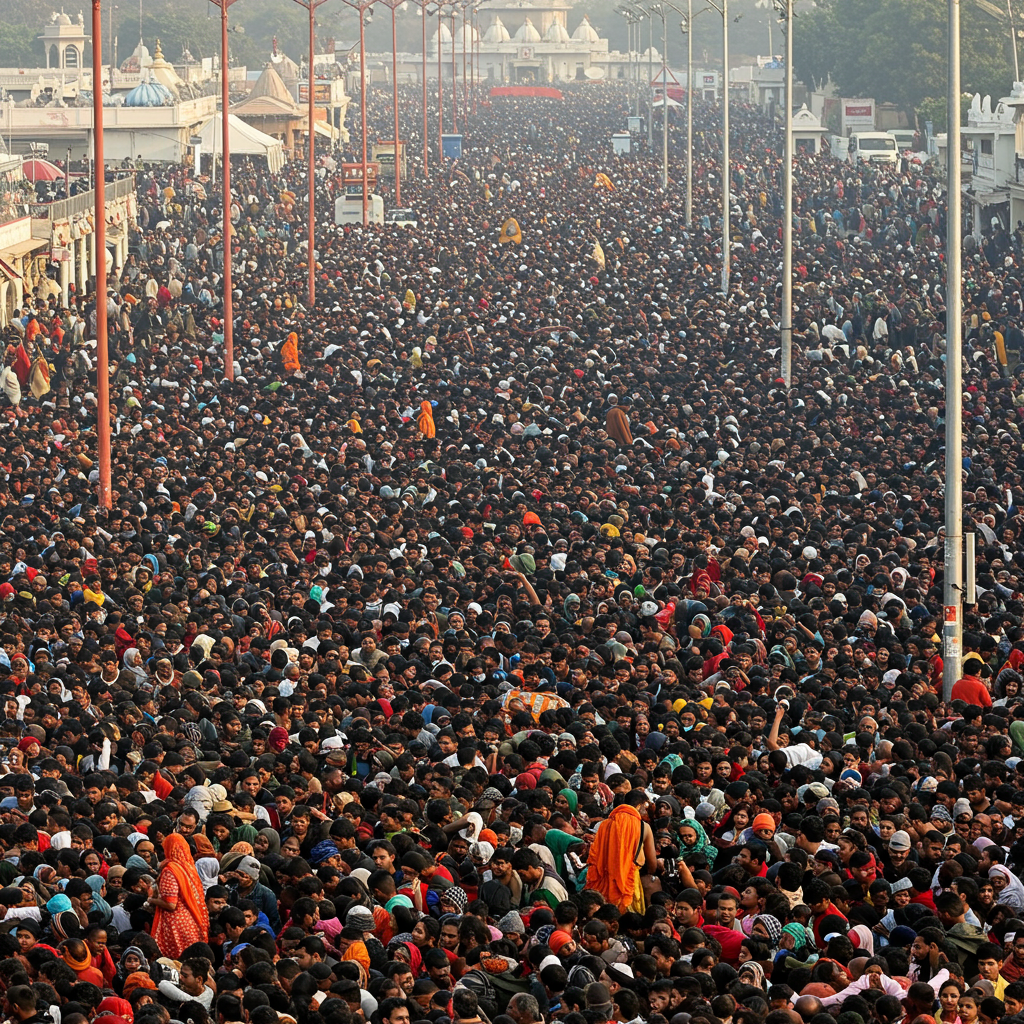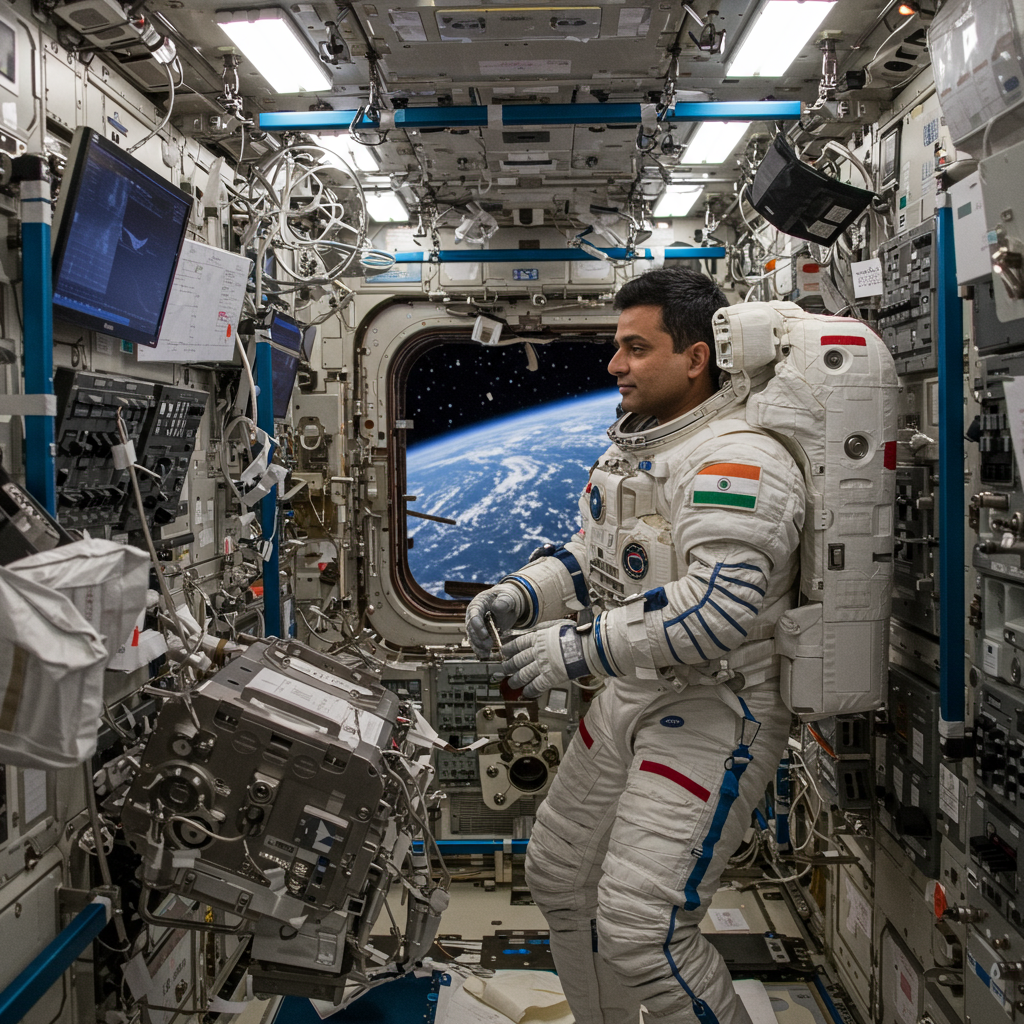Content Warning: This report contains details that some readers may find upsetting.
The Kumbh Mela, revered globally as the largest religious gathering, drew millions to India for a sacred Hindu festival. While officials reported a specific number of fatalities following a devastating crowd crush during the event, a comprehensive investigation by BBC Hindi suggests a far greater number of pilgrims tragically lost their lives, with evidence pointing to deliberate attempts to conceal the true scale of the disaster. This deep dive explores the stark contrast between the official narrative and the findings on the ground, revealing a landscape of unacknowledged deaths and inconsistent compensation practices.
Unearthing the Discrepancy: Official vs. Verified Deaths
Authorities in India’s northern Uttar Pradesh (UP) state initially stated that 37 people died in the crowd crush incident that occurred on January 29. However, the BBC investigation, conducted over weeks and spanning across 11 Indian states, uncovered compelling evidence for a significantly higher death toll. By meeting with over 100 affected families, cross-referencing local reports, and verifying details through various proofs, the investigation successfully corroborated the deaths of 82 individuals, more than double the official count. This figure excludes additional cases where concrete evidence was still being gathered, suggesting the true number could be higher still.
The probe revealed that Indian officials quietly distributed compensation to families of victims whose deaths were seemingly not included in the publicly acknowledged count. This unofficial form of acknowledgment provides a crucial piece of evidence suggesting awareness within the administration that the tragedy’s impact extended far beyond the stated figure of 37 fatalities. The disparity between the official count and the verified deaths highlights profound questions about transparency and accountability surrounding the handling of the disaster.
Compensation Chaos and Cover-Ups
One of the most striking findings of the investigation relates to the inconsistent and often opaque process of providing compensation to victims’ families. The UP government announced a standard compensation package of 2.5 million rupees (approximately $28,800 or £21,450) for the families of acknowledged victims. They stated this amount was paid to 35 families out of the official 37 deaths (one victim remained unidentified, another lacked a legal heir). While the BBC confirmed one additional family received the full 2.5 million rupees via cheque, the compensation for the remaining 35 acknowledged victims was reportedly transferred directly to bank accounts.
However, the investigation unearthed 26 further cases where families received partial compensation amounting to 500,000 rupees (approximately $5,758 or £4,291). This lower sum was often delivered in cash directly to families’ homes by teams of plain-clothed police officers. For instance, police traveled hundreds of kilometers to Bihar to deliver this sum in cash to the family of 62-year-old Tara Devi, whose son confirmed she died in the crush. Similar deliveries were documented in states like West Bengal and within UP itself.
Adding to the complexity, the BBC identified another 18 cases where no compensation whatsoever had been provided to the grieving families. This three-tiered system of compensation – full, partial, or none – appears to correlate strongly with whether the death was officially acknowledged or hidden, raising concerns about equitable treatment and recognition of all lives lost.
Pressure to Sign False Documents
A particularly disturbing element uncovered was the pressure placed on families receiving the partial 500,000-rupee payments. In many instances, officials allegedly required families to sign documents attributing the cause of death to health issues or natural causes rather than the crowd crush. Families insisted their loved ones died in the crush, but according to the investigation’s findings, these documents were a prerequisite for receiving even the partial sum. This practice is significant because the UP government typically does not provide compensation for natural deaths occurring during the Kumbh Mela, suggesting this was a tactic to avoid full accountability and compensation for crush-related fatalities. Not all families yielded to this pressure; relatives of Sunaina Devi in Bihar reportedly refused the 500,000-rupee payment because they would not “sign false documents.”
Contradicting Claims: Multiple Crush Locations
Official statements, including those from Chief Minister Yogi Adityanath, maintained that only one crowd crush incident occurred on January 29, located at the Sangam nose – the sacred confluence point of three rivers: Ganga, Yamuna, and the mythical Saraswati.
The BBC investigation, however, gathered extensive eyewitness testimony and corroborated evidence that points to at least four separate crush incidents taking place in Prayagraj on that fateful day. These locations included the Sangam Nose itself, but also the Jhusi side of Samudrakup Chauraha, Airavat Marg, and Mukti Marg Chauraha near Kalpavriksha Gate.
Detailed interviews with families and eyewitnesses allowed investigators to reconstruct timelines and identify specific landmarks related to each death, confirming multiple sites of tragedy. For example, families of five victims who died near Kalpavriksha Gate, several kilometers from Sangam Nose, shared harrowing accounts of sitting with bodies for hours under the sun, abandoned without assistance. The family of Dharmbir Rajbhar in Jaunpur, UP, received partial compensation for his wife and daughter-in-law, who died in the Airavat Marg crush, directly contradicting the official single-location claim.
Location Discrepancies in Official Records
Further evidence supporting the existence of multiple, potentially downplayed, incidents came from examining the stated death locations in official records linked to compensation. Cases where families received the full 2.5 million rupees often listed a location like “Ward No. 7, Fort Cantt, Prayagraj,” situated about 1.5 kilometers from the main Sangam Nose site. In contrast, many cases receiving the partial 500,000-rupee compensation cited death locations in areas like “Sector-20 or Sector-21, Kumbh Mela area, Jhusi.” Some families whose relatives died nearer to Sangam Nose reported that their death certificates incorrectly listed Jhusi, fueling suspicions that locations were being misrepresented in documentation to disperse the impact or downplay the severity of the primary Sangam site incident.
The Long Wait for Recognition and Justice
For the 18 families who received no compensation, the struggle for recognition of their loss continues. There appears to be no single common factor linking these cases, making their exclusion particularly arbitrary and painful. In one identified crush location, while three families received 500,000 rupees for their deceased relatives, two others whose bodies were recovered from the same site received nothing. Some families possess photographic evidence of their relatives’ bodies at the crush sites, yet these deaths remain unacknowledged by the authorities.
Obtaining official documentation has been another major hurdle. Bhagirathi Gond, son of Shyamlal Gond who died in the crush, recounts the agonizing difficulty in securing a death certificate. After traveling to Prayagraj and locating his father’s body, listed as unidentified at a hospital, he was reportedly told to simply take the body without following official procedures. It took four months before he finally received the death certificate, but he is still waiting for any acknowledgment or compensation for his father, whose death in the crush has not been officially recognized.
Victims’ families and eyewitnesses also recounted a striking lack of immediate assistance at the crush sites. Despite official claims of extensive security measures, including 2,750 AI-enabled CCTVs, 50,000 security personnel, drones, and ambulances, families like that of Meena Pandey waited for hours with bodies without any help arriving. The inability to secure timely assistance or even basic necessities like water for those tending to the deceased highlights a critical failure in the promised infrastructure and emergency response.
Verifying the Unseen Victims
The BBC’s rigorous methodology underscores the efforts made to substantiate the hidden death toll. Investigators cross-referenced local newspaper reports, connected with district reporters to trace the movement of bodies, mapped these locations, and then conducted in-person visits to victims’ families across multiple states. Verification relied on concrete evidence such as post-mortem reports, morgue slips, official death certificates (where available), and photographic or video proof from the day of the incident. By combining these tangible proofs with detailed interviews and eyewitness accounts, the investigation built a robust case for the significantly underestimated number of fatalities.
Official Silence and Ongoing Investigations
Despite repeated attempts to seek clarification and comment from UP government officials, the BBC’s inquiries largely went unanswered or were met with refusals. Emails to the information department and district magistrate received no substantive response, and attempts to reach the UP police chief were unsuccessful. The police commissioner and Mela officer at the time of the incident reportedly declined to answer questions. This official silence further deepens concerns about transparency and accountability in the aftermath of the tragedy. A three-member judicial commission was established to investigate the incident, but its initial one-month tenure was extended, and its findings remain pending.
The comprehensive findings of the investigation paint a troubling picture that starkly contrasts with the official narrative. They reveal not only a likely significantly higher death toll but also suggest systemic issues regarding disaster management, transparency, and the equitable treatment of victims’ families during one of the world’s largest and most complex human gatherings. The human cost of the Kumbh Mela crush, it appears, was far more extensive and devastating than officially acknowledged.
Frequently Asked Questions
How does the BBC investigation’s death toll compare to the official figure for the Kumbh Mela crush?
The official death toll announced by the UP government following the crowd crush on January 29 was 37. However, a BBC Hindi investigation, based on verification with families and evidence across 11 states, found concrete proof for at least 82 deaths. This suggests the true number of fatalities was significantly higher than officially acknowledged, more than double the initial figure.
What kind of compensation did families receive, and were there issues with the payments?
Compensation varied widely. The UP government promised 2.5 million rupees for officially acknowledged victims, stating this was paid to 35 families (out of 37 official deaths). The BBC investigation found an additional family received this amount via cheque. However, the investigation also uncovered 26 cases where families received a partial sum of 500,000 rupees, often delivered in cash, and 18 cases where no compensation was given. Families receiving partial payments reported being pressured to sign documents falsely attributing deaths to health issues rather than the crush, a condition often required to receive even this lower amount.
Did the authorities acknowledge multiple crush sites, and what did the investigation find?
Official statements, including from the Chief Minister, claimed only one crowd crush occurred at the Sangam Nose. The BBC investigation contradicted this, presenting evidence and eyewitness accounts identifying at least four separate crush locations in Prayagraj on January 29: Sangam Nose, Jhusi side of Samudrakup Chauraha, Airavat Marg, and Mukti Marg Chauraha near Kalpavriksha Gate. Location discrepancies in official compensation records also supported the finding of multiple incident sites.
Conclusion
The BBC’s extensive investigation into the Kumbh Mela crowd crush reveals a profound disparity between the official account and the reality faced by many victims’ families. While the government maintains a death toll of 37, evidence suggests a hidden toll of at least 82 verified deaths, alongside a chaotic and inconsistent compensation process. The findings, including instances of families pressured to conceal the true cause of death and evidence of multiple crush locations despite official denials, raise serious concerns about transparency and accountability surrounding the handling of the tragedy. For the families mourning their lost loved ones, the lack of official acknowledgment and equitable support adds immeasurable pain to their grief, underscoring the urgent need for a full and transparent investigation into the true scale of the disaster.



